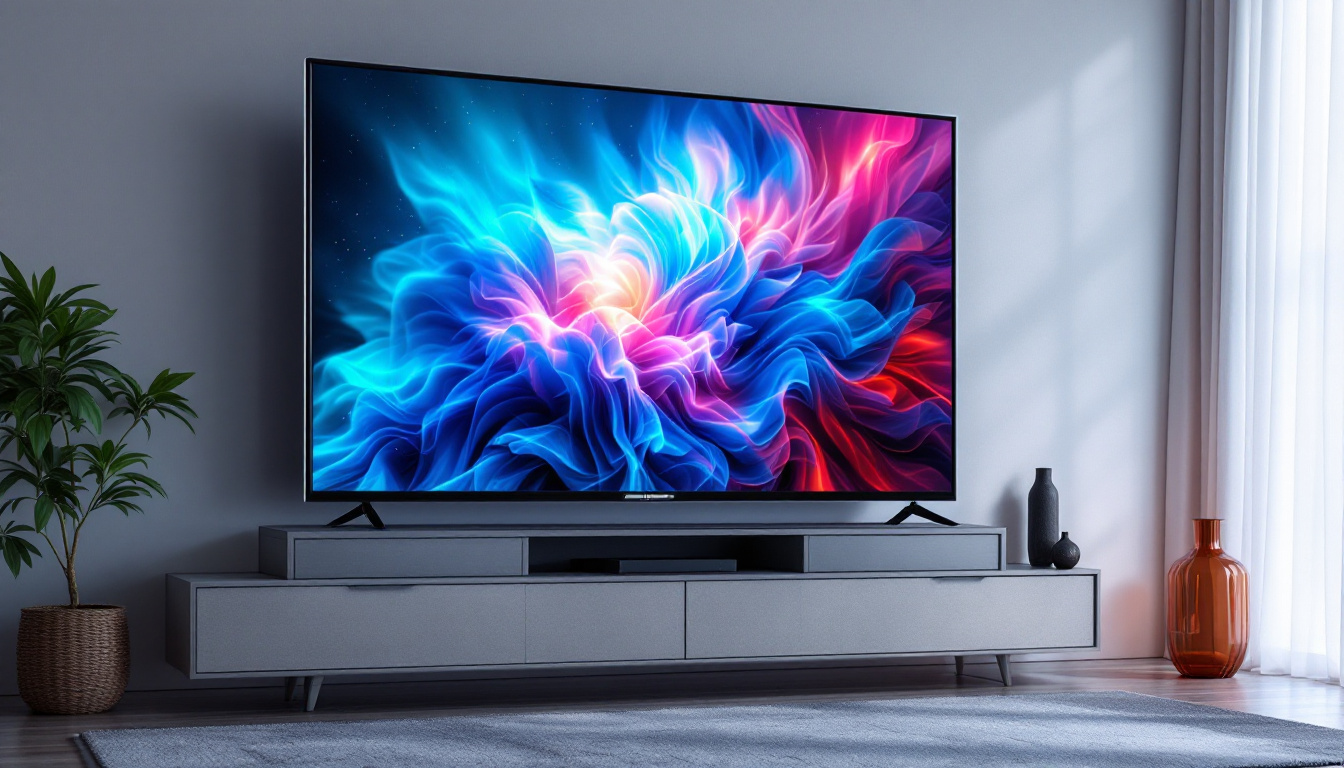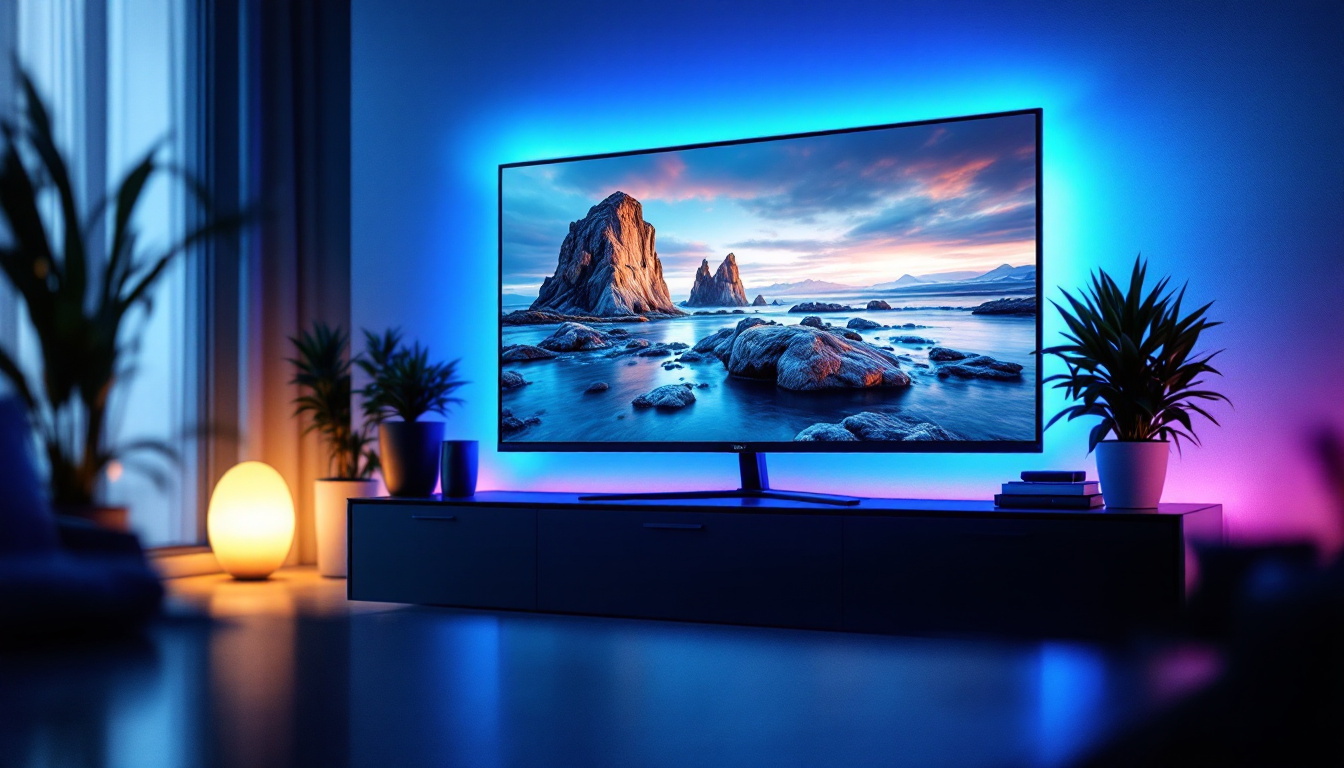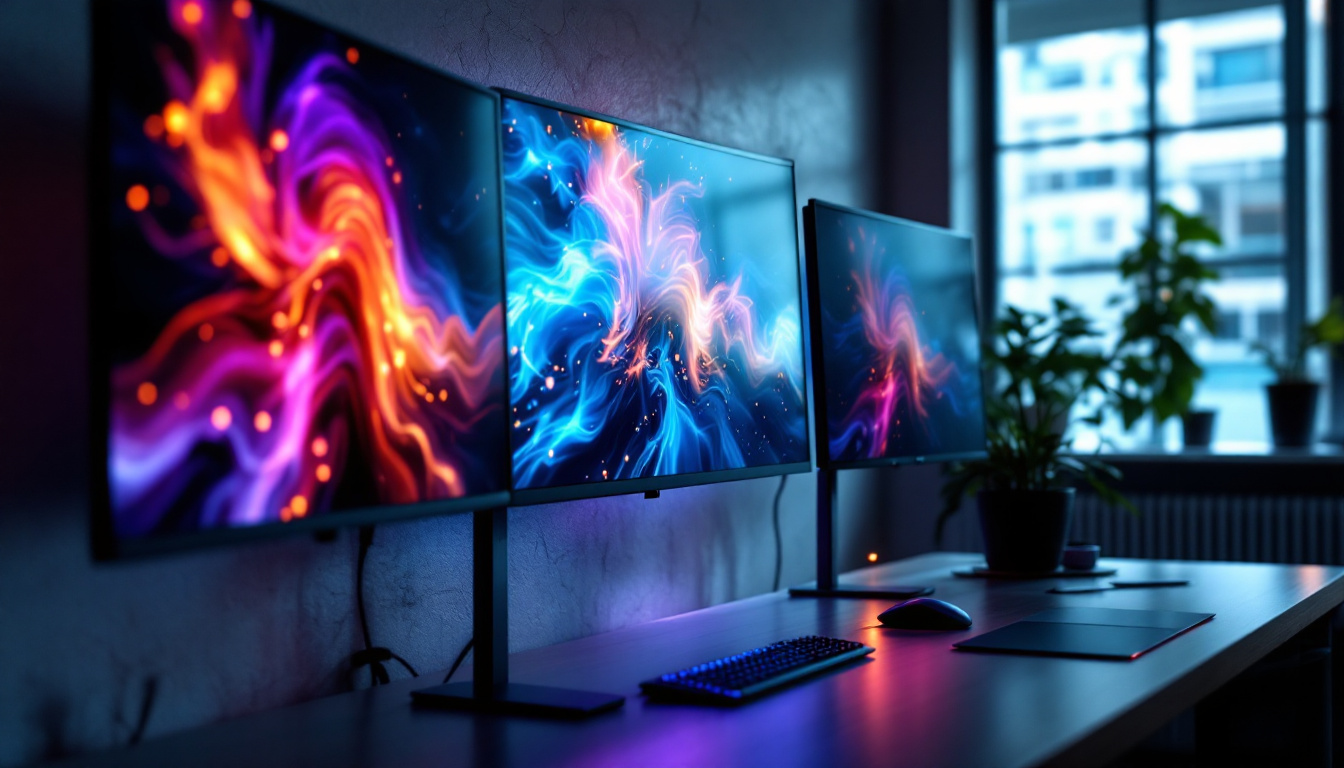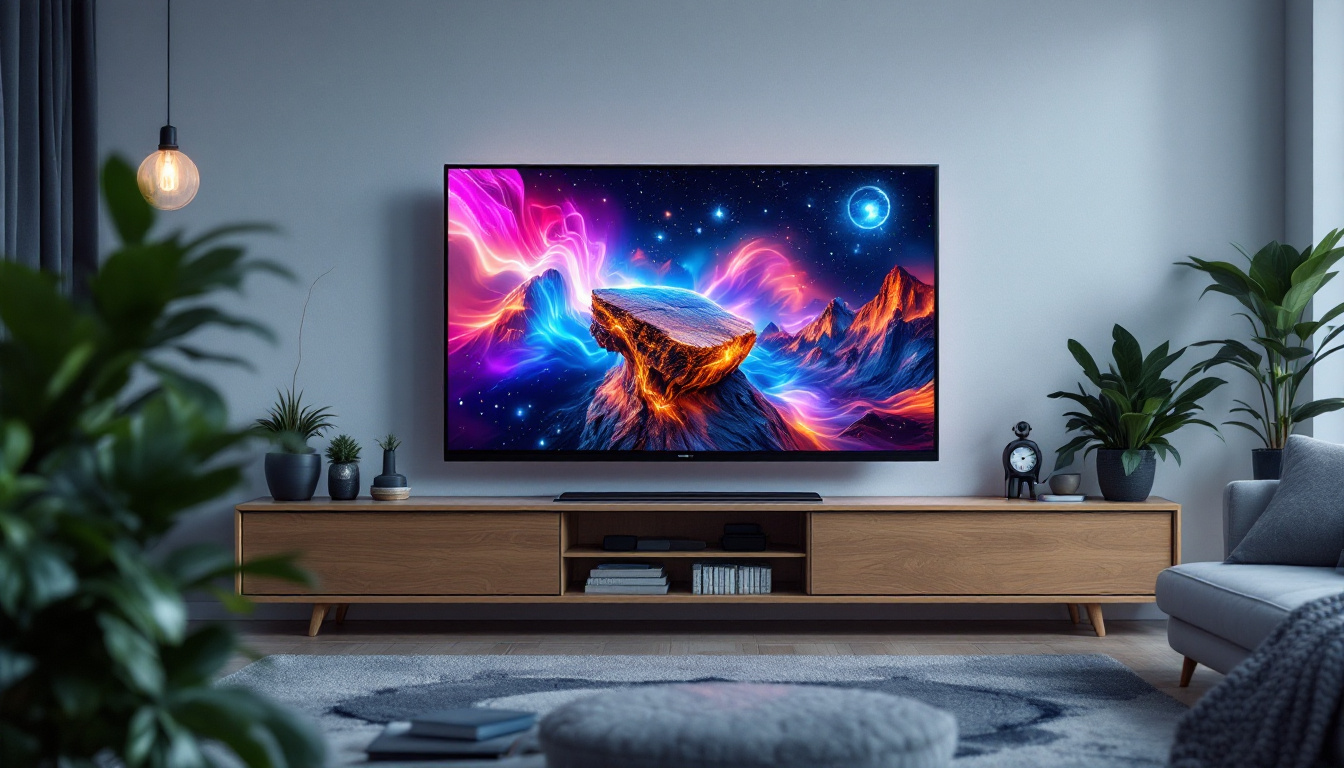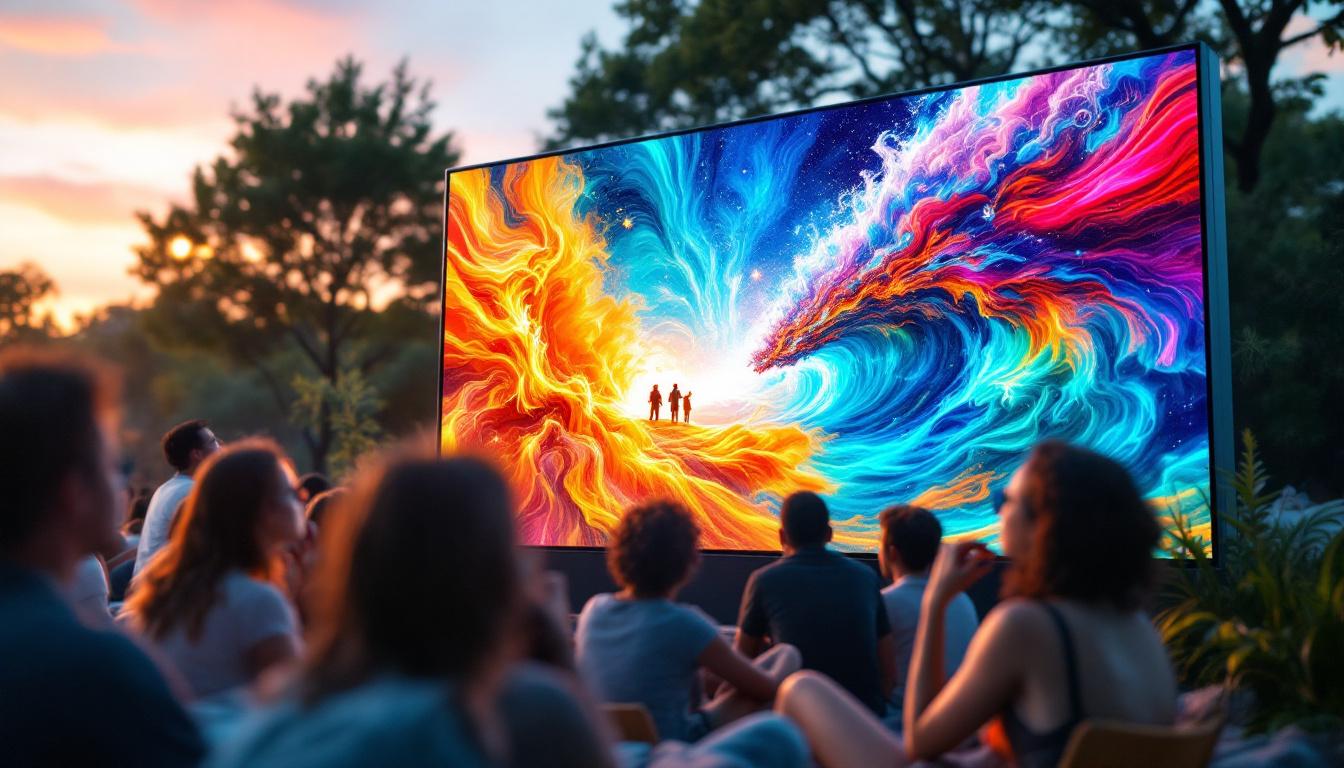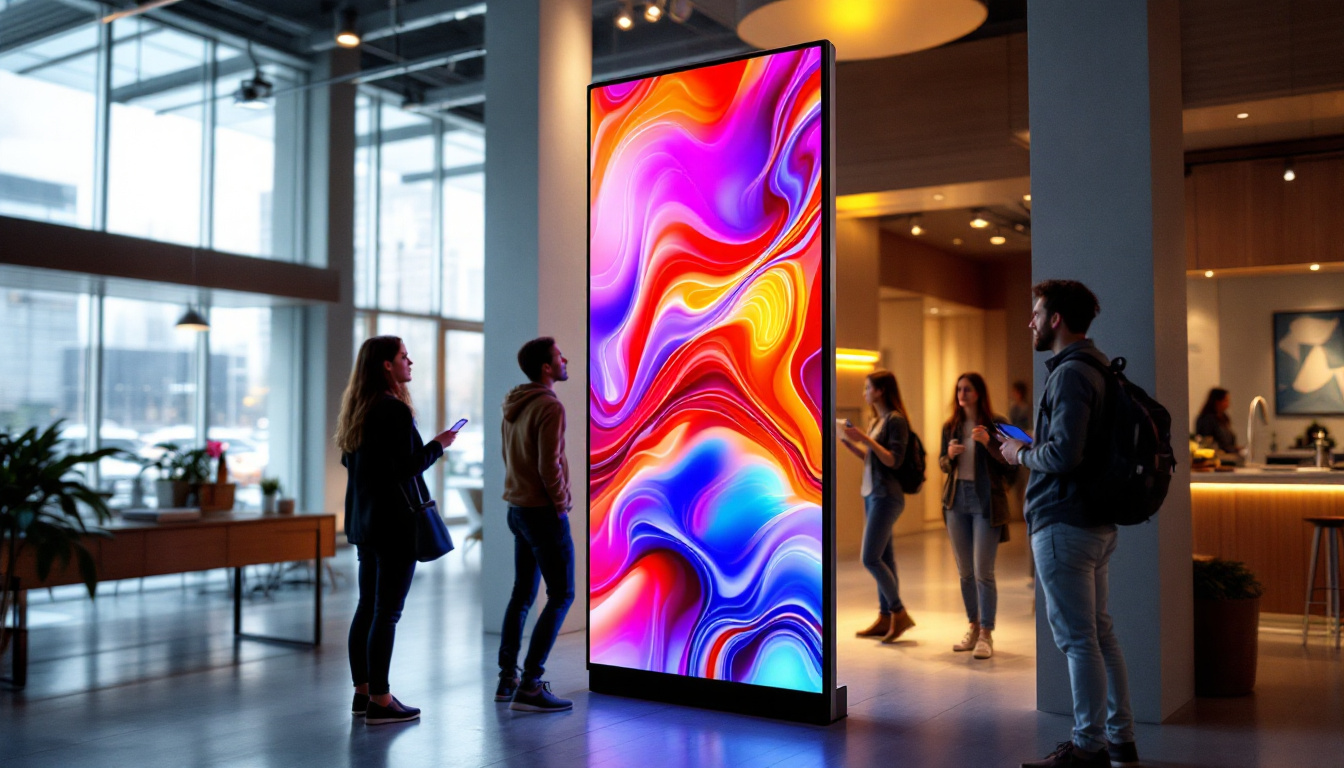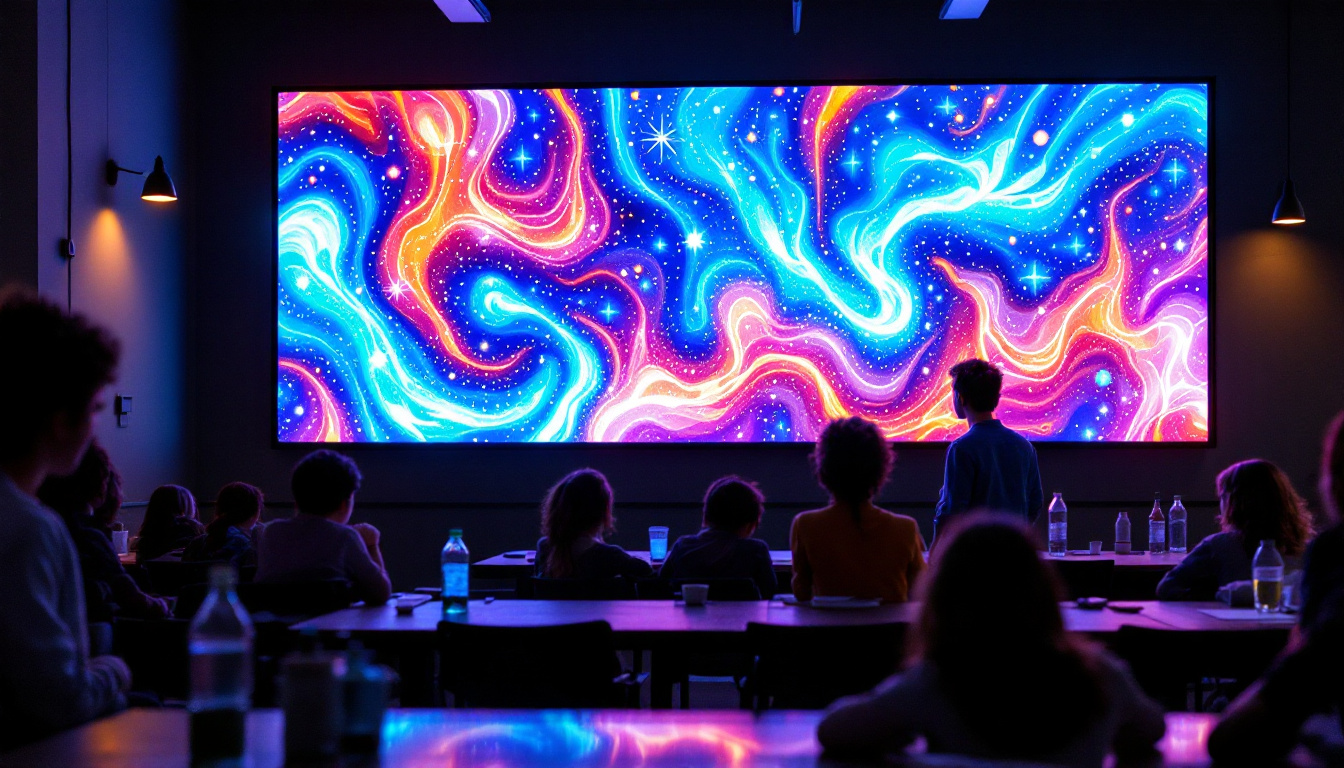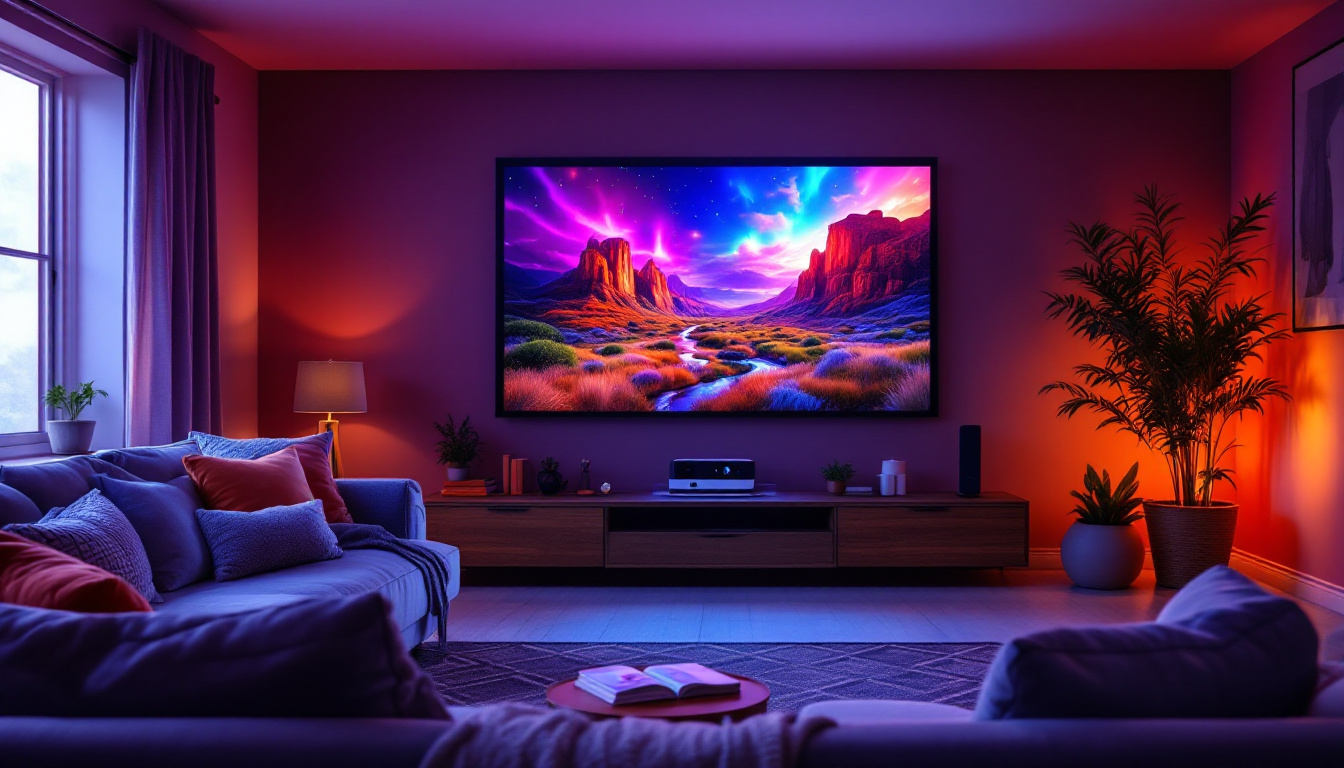Touch Screen TV 55 Inch: LED Display Explained
In recent years, the evolution of television technology has taken a significant leap forward. Among the various innovations, touch screen TVs have emerged as a captivating option for both entertainment and interactive experiences. This article delves into the specifics of 55-inch touch screen TVs with LED displays, exploring their features, benefits, and the technology behind them.
Understanding LED Display Technology
LED (Light Emitting Diode) technology has transformed the way images are displayed on screens. Unlike traditional LCD screens that use fluorescent backlighting, LED displays utilize tiny diodes to produce light, resulting in brighter images and improved energy efficiency.
LED displays are known for their vibrant colors and high contrast ratios. This technology allows for deeper blacks and brighter whites, making the viewing experience more immersive. The combination of touch screen capabilities with LED technology enhances interactivity, allowing users to engage with content in a more dynamic way. Furthermore, the rapid response time of LED displays minimizes motion blur, making them ideal for fast-paced content like sports and action movies, where clarity is paramount.
How LED Displays Work
At the core of LED display technology is the arrangement of diodes. These diodes emit light when an electric current passes through them. In a typical LED display, there are two main types: edge-lit and backlit. Edge-lit displays have LEDs positioned around the edges of the screen, while backlit displays have a grid of LEDs behind the screen, providing uniform lighting.
This arrangement not only improves brightness but also allows for thinner designs, making modern TVs sleeker and more aesthetically pleasing. The precision of LED technology contributes to sharper images and a broader color spectrum, enhancing the overall viewing experience. Additionally, advancements in local dimming technology allow backlit displays to selectively dim certain areas of the screen, further improving contrast and making dark scenes more realistic and engaging.
The Benefits of LED Displays
One of the primary advantages of LED displays is their energy efficiency. Compared to traditional LCDs, LED screens consume less power, which can lead to significant savings on electricity bills over time. Additionally, LED displays have a longer lifespan, reducing the frequency of replacements.
Another benefit is their ability to produce high-quality images in various lighting conditions. Whether watching a movie in a dimly lit room or a bright living space, LED displays adapt well, ensuring that viewers enjoy a consistent experience regardless of the environment. This adaptability is further enhanced by features such as automatic brightness adjustment, which optimizes the display based on ambient light levels. Moreover, the durability of LED technology makes it suitable for a wide range of applications, from large outdoor billboards to small handheld devices, showcasing its versatility in modern technology.
Touch Screen Technology: An Overview
Touch screen technology has revolutionized how users interact with devices. By allowing direct manipulation of the display, touch screens provide a more intuitive user experience. This technology is particularly beneficial for TVs, as it enables users to navigate menus, select content, and control settings with ease.
Touch screens can be categorized into several types, including resistive, capacitive, and optical. Each type has its own set of advantages and is suited for different applications. In the context of a 55-inch touch screen TV, capacitive touch technology is often preferred due to its responsiveness and ability to recognize multiple touch points simultaneously.
How Touch Screen Technology Works
Capacitive touch screens operate by detecting changes in electrical fields. When a finger touches the screen, it disrupts the electrical field, allowing the device to pinpoint the location of the touch. This technology enables multi-touch capabilities, meaning users can perform gestures such as pinch-to-zoom or swipe with ease.
Incorporating touch technology into a TV enhances interactivity, making it possible to browse streaming services, play games, and even conduct video calls directly from the screen. This level of engagement transforms passive viewing into an active experience, appealing to a broader audience. Additionally, the tactile feedback provided by touch screens can enhance user satisfaction, as it allows for a more immersive interaction with the content displayed.
The Advantages of Touch Screen TVs
Touch screen TVs offer a unique blend of functionality and entertainment. One of the key benefits is the ease of navigation. Users can quickly access their favorite apps, adjust settings, and browse content without the need for a remote control. This convenience is particularly appealing in a family setting where multiple users may want to interact with the TV.
Moreover, touch screen TVs can serve educational purposes, making them ideal for classrooms or home learning environments. Interactive lessons and educational apps can be easily accessed, fostering a more engaging learning experience for students. The ability to annotate directly on the screen during presentations or lessons can also enhance comprehension and retention of information, making learning more dynamic. Furthermore, as technology continues to evolve, future touch screen TVs may integrate advanced features such as voice recognition and artificial intelligence, further enriching the interactive experience and personalizing content delivery for users.
Choosing the Right 55-Inch Touch Screen TV
When selecting a 55-inch touch screen TV, several factors should be considered to ensure that the chosen model meets individual needs and preferences. These factors include display quality, touch sensitivity, connectivity options, and additional features.
Display Quality
Display quality is paramount when choosing a TV. Look for models with high resolution, such as 4K Ultra HD, to enjoy crisp and detailed images. Additionally, consider the color accuracy and contrast ratio, as these elements significantly impact the viewing experience.
Some touch screen TVs also come equipped with HDR (High Dynamic Range) technology, which enhances the range of colors and brightness levels, providing a more lifelike picture. This feature is particularly beneficial for watching movies and playing video games.
Touch Sensitivity and Responsiveness
The touch sensitivity of the screen is crucial for an enjoyable user experience. A responsive touch screen will register inputs quickly and accurately, allowing for smooth navigation. It’s advisable to read reviews and test the touch functionality before making a purchase.
Additionally, consider whether the TV supports multi-touch gestures, as this can enhance interactivity and make using the device more enjoyable. A TV that can recognize multiple touches simultaneously can facilitate collaborative activities, such as playing games with friends or family.
Connectivity Options
Modern TVs come with a variety of connectivity options. Ensure that the touch screen TV has multiple HDMI ports, USB ports, and support for wireless connections such as Wi-Fi and Bluetooth. These features allow users to connect various devices, including gaming consoles, streaming devices, and sound systems, enhancing the overall entertainment experience.
Furthermore, check for compatibility with smart home devices. A touch screen TV that integrates seamlessly with smart home technology can provide added convenience and functionality, allowing users to control their environment from the comfort of their couch.
Applications of Touch Screen TVs
The versatility of touch screen TVs extends beyond traditional viewing. They can be utilized in various settings, including homes, offices, and educational institutions. Understanding the applications of these devices can help users maximize their potential.
Home Entertainment
In a home entertainment setting, touch screen TVs can serve as the central hub for all multimedia activities. Users can stream movies, play video games, and access social media, all from a single device. The interactive nature of touch screens allows for a more engaging experience, making family movie nights or gaming sessions more enjoyable.
Moreover, touch screen TVs can be integrated with home automation systems, enabling users to control lights, thermostats, and security systems directly from the TV interface. This level of integration enhances convenience and creates a cohesive smart home environment.
Educational Use
In educational settings, touch screen TVs have gained popularity as interactive teaching tools. Teachers can use these devices to present lessons, display educational videos, and facilitate group activities. The ability to write directly on the screen or annotate presentations encourages student participation and collaboration.
Additionally, touch screen TVs can support various educational apps, making learning more interactive and engaging for students. This technology can cater to different learning styles, helping students grasp complex concepts more effectively.
Business Applications
In the business world, touch screen TVs can be used for presentations, video conferencing, and collaborative work. The interactive nature of these devices allows teams to brainstorm ideas, share documents, and engage in discussions more effectively.
Moreover, touch screen TVs can enhance customer experiences in retail environments. Interactive displays can provide product information, promotional content, and even facilitate transactions, making shopping more engaging for consumers.
Conclusion
The advent of touch screen technology in 55-inch LED TVs has opened up a world of possibilities for entertainment, education, and business applications. With their vibrant displays, intuitive interfaces, and interactive capabilities, these devices offer a unique viewing experience that caters to a wide range of users.
When choosing a touch screen TV, it is essential to consider factors such as display quality, touch sensitivity, and connectivity options to ensure that the selected model meets individual needs. As technology continues to advance, touch screen TVs are likely to become even more integrated into daily life, providing users with enhanced functionality and engagement.
Whether for home entertainment, educational purposes, or business applications, a 55-inch touch screen TV with LED display technology is a worthwhile investment that can elevate the way users interact with media and information.
Discover LumenMatrix’s Innovative LED Displays
Ready to transform your viewing experience with the latest in touch screen technology? LumenMatrix is at the forefront of LED display innovation, offering a wide array of solutions that bring your content to life. From Indoor and Outdoor LED Wall Displays to specialized options like Vehicle, Sports, and Floor LED Displays, our products are designed to captivate and engage. Explore our Custom, All-in-One, and Transparent LED Displays to find the perfect fit for your home entertainment, educational, or business needs. Check out LumenMatrix LED Display Solutions today and step into a world of vivid imagery and interactive brilliance.

